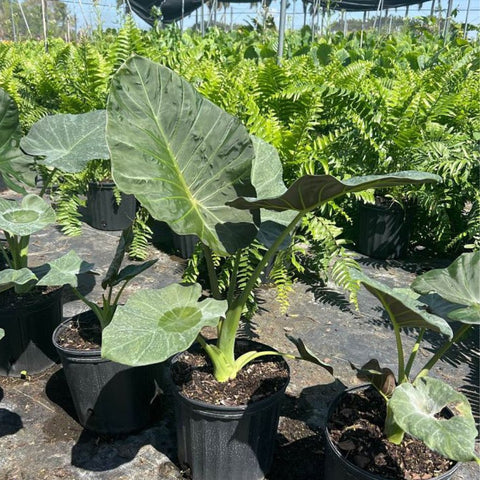Introduction
As winter slowly gives way to the first warm breezes of spring, thoughts inevitably turn towards the great outdoors and the beautiful living landscapes that are a hallmark of this rejuvenating season. For many homeowners, spring is a time of renewal and growth—not just within the garden, but also within their lawns. A lush, green lawn enhances curb appeal, increases property value, and serves as a wonderful outdoor space for recreation and relaxation. With the right care, your lawn can be the envy of the neighborhood and a testament to your dedication and pride in your home. This guide promises actionable tips to help you achieve a lusher, greener lawn this spring.

Preparing Your Lawn for Spring
Assessing Lawn Health
The first step in your spring lawn care routine is assessing the health of your lawn. Winter can be harsh and leave your lawn in a less-than-optimal state. It’s important to check for any overwintering damages and to identify any areas that need special attention.
Identifying Damage from Winter Weather
Winter can wreak havoc on your lawn, leaving behind dead patches, compaction, and a plethora of debris. As the snow melts and temperatures rise, it’s essential to identify and assess these damages to formulate an appropriate action plan. Pay special attention to areas that show signs of frost heave or ice damage. Checking for compaction, particularly in high-traffic areas, will help identify where aeration might be necessary. Moreover, mud and debris left from melted snow can suffocate grass and should be cleaned promptly.
Recognizing Signs of Diseases and Pests
Throughout winter, certain diseases, such as snow mold, can form under the snow cover and become apparent as spring approaches. Look for circular, water-soaked patches in the lawn that may appear matted or turned a different color. Similarly, winter is a dormant period for many pests that can spring back to life as temperatures rise. Be on the lookout for signs of grubs or other insects that may damage your lawn as the weather warms up.

Cleaning Up
The transition from winter to spring is the perfect time for a thorough cleanup, which lays the foundation for a healthy lawn throughout the growing season.
Clearing Debris
This step involves removing leaves, sticks, and other debris that may have accumulated over the winter months. Such clutter can prevent sunlight from reaching the grass and provide cover for pests and diseases. Use a rake to gently collect and dispose of these materials, allowing your grass to breathe and absorb the early spring sunshine and rain.
Mowing
Early spring mowing is crucial for maintaining a healthy lawn. As soon as the ground is dry enough and the grass is about 3-4 inches high, it’s time to break out the lawnmower. Be sure to set your mower blades to the highest setting to avoid cutting too much at once—a practice that can stress the grass. Regular mowing encourages lateral growth, leading to a denser, healthier lawn.
Aeration and Dethatching
Aeration and dethatching are beneficial practices for reinvigorating your lawn, allowing it to fully thrive during the spring growth spurt.
Aerating Your Lawn
Compacted soil can impede the flow of air, water, and nutrients to the roots of your grass. Aeration involves perforating the soil with small holes to alleviate compaction and allow these critical elements to penetrate. This process enhances root development, leading to a stronger and more robust lawn. For best results, consider renting an aerator or hiring a professional to perform this task.

Dethatching
Over time, a layer of thatch—a mixture of living and dead grass and roots—can accumulate between your grass and the soil. While a small amount of thatch is beneficial, too much can restrict air and water penetration. Use a dethatching rake or machine to remove this layer, promoting healthier, more vigorous growth as the season progresses.
Feeding Your Lawn: Fertilization Tips
Benefits of Spring Fertilization
As the growing season kicks off, feeding your lawn with the right nutrients is essential. Spring fertilization provides grass with the building blocks it needs to recover from winter and prepare for the heat of summer.
Choosing the Right Fertilizer
Select a fertilizer that balances key nutrients: nitrogen, phosphorus, and potassium, often referred to by their chemical symbols N-P-K. A fertilizer formulated for spring use typically has higher nitrogen content, promoting lush, green growth. Be sure to follow the manufacturer's instructions for application rates to avoid over-fertilizing, which can harm your lawn.
Application Techniques
Whether using a broadcast spreader or a drop spreader, ensure even coverage to avoid patchy areas and potential nutrient burns. Water your lawn thoroughly after fertilizing to allow nutrients to seep deeply into the soil, further enhancing accessibility to the roots.

Organic vs. Synthetic Options
You have the option to choose between organic and synthetic fertilizers. Organic options, such as compost or well-rotted manure, provide a slow-release of nutrients and improve soil health in the long term. Synthetic fertilizers provide a quick boost, ideal for a rapid green-up. However, the best choice will depend on your specific lawn needs and environmental considerations.
Seeding and Overseeding
When to Seed Your Lawn
Determining the right time to seed your lawn can make a significant difference in the successful establishment of new grass. Early spring, once soil temperatures consistently reach 50 degrees Fahrenheit, is an ideal time.
Choosing the Right Grass Seed
Select a grass seed that is well-suited to your lawn’s sunlight exposure, climate, and soil type. Many options are available, including cool-season grasses like Kentucky bluegrass or fescues, as well as warm-season varieties like Bermuda or zoysia for more temperate climates. We offer a wide range of grass seeds at Plantology that can cater to your specific lawn requirements.
Overseeding Techniques
Overseeding involves sowing grass seed over existing turf to improve both its density and health. Combine this practice with a light application of topsoil or compost, raking it gently into the turf to ensure good seed-to-soil contact. Water consistently but lightly until the new grass has become established. It’s the perfect way to bolster bare spots and reinvigorate the lawn.

Watering Wisely
Establishing a Watering Routine
Water is a critical component to lawn vitality, particularly as temperatures rise. However, overwatering can be just as detrimental as drought stress, making it essential to establish a sensible watering routine.
Timing and Frequency
The best time to water your lawn is early in the morning when temperatures are cooler and winds are calmer, reducing evaporation loss. Aim for deep and infrequent watering—about one inch per week, either from rainfall or supplemental irrigation—to encourage deep root growth.
Recognizing Water Stress
Watch for signs of water stress in your grass, which may appear dry, discolored, or wilted. Such indicators suggest that additional watering may be necessary to maintain lawn health.
Controlling Weeds, Pests, and Diseases
Weed Management Strategies
Weeds compete with your grass for space, sunlight, and nutrients, making their management a top priority in maintaining a pristine lawn.
Pre-emergent Herbicides
Applying a pre-emergent herbicide early in the spring can prevent weed seeds from germinating, stopping them before they start. This method is particularly effective against annual weeds like crabgrass. Ensure thorough and even application for the best results.

Spotting and Removing Weeds
For weeds that do make an appearance, practice spot removal with hand tools or a targeted post-emergent herbicide. Addressing these intruders promptly can prevent them from seeding and spreading across your lawn.
Dealing with Pests
Pests are pesky visitors that can disrupt your lawn’s health and beauty. Identifying and controlling them is crucial for maintaining lawn integrity.
Common Lawn Pests and Their Treatment
Grubs, chinch bugs, and sod webworms are among the most common lawn pests. If you notice brown patches or other damage, consider applying an appropriate pesticide, being mindful of the directions and environmental impacts. Alternatively, opt for biological controls, such as beneficial nematodes, to tackle pest problems naturally.
Managing Lawn Diseases
Diseases like brown patch or red thread can also affect the look and health of your lawn. Adhering to proper cultural practices—such as mowing height, watering practices, and fertilization—forms the first line of defense against these pathogens.
Fungicides and Other Treatments
If your lawn does fall prey to a fungal disease, consider fungicides as a treatment option. It’s vital to select a treatment specifically designed for the particular disease affecting your lawn and follow the application instructions precisely.

Crafting a Beautiful Landscape
Enhancing Your Lawn with Plant Additions
Your lawn can serve as the backdrop to a stunning landscape that showcases the beauty of nature. Strategic plant additions not only enhance the aesthetic but can also support local ecosystems.
Colorful Blooms and Lush Foliage
Consider incorporating a variety of trees, shrubs, and perennials to add depth and color to your landscape. Agapanthus Lily of the Nile offers stunning blue blooms that can draw the eye and increase your garden's charm. Similarly, introduce striking foliage like the Aglaonema Silver Bay which can thrive in various conditions, adding visual interest with its unique patterning.
Using Trees for Structure and Shade
Trees provide natural grace and enduring presence in any landscape. They offer shade, contribute to the ecosystem, and can even improve property value. Species like the Alexander Palm can introduce a tropical allure and structure to your garden plan.
Edging and Mulching
Edging and mulching are crucial for defining planting spaces and protecting plant roots, respectively.
Creating Defined Edges
Sharp, clean edges between lawns and planting beds offer a professional look and make maintenance easier. Use edging materials like stone, plastic, or metal to prevent grass encroachment and define your landscaping areas.

The Benefits of Mulch
Applying a layer of mulch around plants not only suppresses weeds and retains moisture but also enhances soil structure as it decomposes. Choose mulches that complement your garden's aesthetic, such as organic bark or decorative stone mulch.
Making the Most of Your Outdoor Space
Creating Functional Areas
Your lawn can serve many purposes beyond aesthetics. Consider designing functional areas tailored to your lifestyle.
Outdoor Living and Play Areas
A portion of your lawn can be dedicated to creating spaces for relaxation and family gatherings. Installing comfortable outdoor seating or dedicating an area for children's play ensures your lawn is both functional and attractive.
Water Features and Hardscaping
Incorporate water features such as fountains or ponds to add a tranquil element to your landscape. Accompany these with hardscape elements like pathways or patios to facilitate movement and provide structure.
Sustainability Practices
Practicing sustainability in lawn care contributes positively to the environment and can enhance the long-term health of your outdoor spaces.

Rainwater Harvesting
Consider installing rain barrels to collect and store rainwater for garden use, reducing water consumption and supporting sustainable practices.
Native Plant Selection
Opt for native and drought-resistant plants that require less water and are adapted to local climate conditions. These choices support biodiversity and can make your lawn a sanctuary for local wildlife.
Embracing these practices not only leads to a lush, green lawn but transforms your outdoor space into a thriving, ecological landscape. For all your lawn care needs, check out Plantology's wide range of plants and trees available at Plantology USA. Let's make your garden dream a reality this spring!
Advanced Lawn Care Techniques
The Science Behind Soil Testing
Understanding the properties of your soil is crucial in ensuring that your lawn receives the proper nutrients and conditions it needs to thrive. Soil testing is an advanced lawn care technique that can provide detailed insights into your soil's pH levels and nutrient content, allowing you to tailor your fertilization and amendment strategies accordingly.
Conducting a Soil Test
To get started with soil testing, sample soil from various locations around your lawn using a clean trowel or soil probe. Mix these samples together and allow them to dry before submitting them to a local agricultural extension service or a commercial soil testing lab. They will analyze the samples and provide a detailed report on nutrient deficiencies and soil pH.

Interpreting Soil Test Results
Once you receive your soil test results, you'll be provided with recommendations on fertilizers and soil amendments needed. For instance, if your soil is too acidic, applying lime can help raise the pH, while sulfur can lower the pH if the soil is too alkaline. These adjustments help optimize nutrient availability and promote robust lawn growth.
Integrated Pest Management (IPM)
Integrated Pest Management (IPM) is a progressive approach to pest control that combines biological, cultural, physical, and chemical tools in a coordinated strategy. It prioritizes environmentally sensitive methods to reduce pest damage to acceptable levels.
Principles of IPM
The core of IPM involves a series of steps: identify pests accurately, monitor pest populations and damage regularly, establish action thresholds where control is needed, choose and implement control strategies, and evaluate outcomes for continuous improvement. This method minimizes environmental risks while maintaining lawn health.
Practical IPM Strategies
Implementing IPM might include introducing natural predators such as ladybugs to control aphid populations or adopting cultural practices like proper watering and aeration to strengthen grass resistance against pests. If chemical intervention is necessary, select pesticides with the lowest impact on non-target organisms.

Utilizing Technology for Lawn Care
Modern technology has made lawn care more efficient and effective. Today, a variety of tools and resources are available to help streamline lawn management and improve outcomes.
Smart Irrigation Systems
Smart irrigation systems utilize weather data and soil moisture sensors to automatically adjust watering schedules. This not only conserves water but also ensures your lawn receives just the right amount of moisture. Many systems can be controlled via smartphone apps, offering real-time notifications and adjustments.
Drone Technology for Lawn Monitoring
Drones equipped with high-resolution cameras and sensors can be used to monitor lawn health from above, providing data on growth patterns, moisture levels, and pest infestations. This bird's-eye view allows for more precise lawn treatments and early detection of potential problems.
Promoting Biodiversity in Your Lawn
Incorporating Diverse Plant Species
A monoculture lawn can be vulnerable to pests and diseases. By introducing a diversity of plant species, you enhance ecological resilience and create a more visually interesting landscape.

Beyond Traditional Grasses
Consider mixing in clover or other groundcovers with your grass. Clover fixes nitrogen, reducing the need for synthetic fertilizers and providing a natural nutrient source for surrounding grasses.
Pollinator-Friendly Gardens
Whether integrated into the lawn or along its edges, planting wildflowers and native plants can create habitats for pollinators, including bees and butterflies. Their presence not only enhances biodiversity but also aids in the pollination of other garden plants.
Creating Wildlife Habitats
Your lawn can be a haven for local wildlife, offering both shelter and food sources.
The Role of Birdhouses and Feeders
Installing birdhouses and feeders can attract a variety of birds, assisting in the control of insect populations and providing entertainment with their natural behaviors. Ensure feeders are cleaned regularly to prevent the spread of diseases.
Building Insect Hotels
Insect hotels provide beneficial insects with a place to nest and overwinter. These structures can be easily crafted from natural materials like bamboo, wood, and straw and strategically placed around your yard to encourage insect biodiversity.
Exploring Permaculture Principles
What is Permaculture?
Permaculture is a system of agricultural and social principles centered around simulating or directly using the patterns and features observed in natural ecosystems. This holistic approach can be applied to lawn and garden care to create self-sustaining ecosystems.

The Three Core Ethics
Permaculture is built on three core ethics: care for the earth, care for people, and fair share. Applying these ethics entails taking action to minimize environmental impact, fostering community engagement by sharing resources, and ensuring sustainable growth for future generations.
Designing Your Lawn with Permaculture
Permaculture design emphasizes multi-functionality and the synergistic relationship between components.
Guild Planting
Guilds are groups of plants that support each other’s growth, offering benefits such as pest control, improved soil health, and better space utilization. For instance, grouping deep-rooted plants with shallow-rooted companions can optimize nutrient sharing and soil stability.
Zone Planning
Zone planning involves arranging plants and elements based on their frequency of use and level of maintenance required. Place high-maintenance plants closer to your home and lower-maintenance plants farther away, facilitating efficient management and reduced resource use.
Seasonal Lawn Care: Beyond Spring
Summer Care Practices
As temperatures soar, your lawn care focus should shift to maintaining moisture and managing heat stress.

Adjusting Mowing Height
During the heat of summer, raise your mower blades to cut the grass higher, leaving more leaf surface to shade the ground and conserve moisture. This practice also promotes deeper root growth, enhancing drought resistance.
Evaluating Irrigation Systems
Review your irrigation system's performance to ensure it is functioning optimally. Check for leaks or clogs and adjust sprinkler heads for coverage efficiency, prioritizing deep watering over frequent, shallow watering sessions.
Autumn Lawn Preparations
Fall is the time to prepare your lawn for winter dormancy and ensure a robust return in spring.
Core Aeration and Overseeding
Core aeration loosens compacted soil and enhances nutrient uptake, preparing the ground for overseeding. Seeding in the fall gives new grass time to establish strong roots before winter.
Proper Fertilization
Apply a slow-release fertilizer with a higher potassium content in fall to bolster root growth and improve cold tolerance. This practice prepares your lawn for the coming winter months and supports an early spring green-up.

By embracing advanced lawn care techniques, promoting biodiversity, and integrating permaculture principles, you create not just a lawn, but a living, breathing ecosystem. Whether you are a DIY enthusiast or seeking expert assistance, the key is thoughtful, informed choices that suit your unique landscape. From early spring preparations to year-round maintenance, Plantology offers the tools and guidance you need. Explore our comprehensive collection at Plantology USA to discover how you can transform your lawn into a vibrant, enduring sanctuary.























Comments (0)
There are no comments for this article. Be the first one to leave a message!